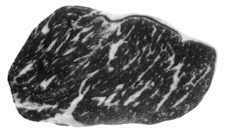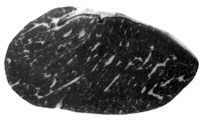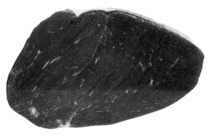Buying Meat


 Buying Lamb
Buying Lamb Lamb is produced from animals less than a year old. Since the quality
of lamb varies according to the age of the animal, it is advisable to buy
lamb that has been USDA-graded.
USDA Prime: Prime grade lamb is very high in tenderness,
juiciness, and flavor. It has moderate marbling, which enhances both
flavor and juiciness. Prime chops and roasts are excellent for dry-heat
cooking (broiling and roasting).
USDA Choice: Choice grade lamb has slightly less marbling than
Prime, but still is of very high quality. Choice chops and roasts also are
very tender, juicy, and flavorful and suited to dry-heat cooking. Lower
grades of lamb and mutton (USDA Good, Utility, and Cull) are seldom marked
with the grade if sold at retail.
Most cuts of USDA Prime and Choice lamb -- including shoulder cuts --
are tender and can be oven roasted, broiled, or pan broiled. A leg of lamb
graded Choice or Prime, for example, is delectable when oven roasted.
The less tender cuts -- the breast, riblets, neck, and shank -- can be
braised slowly to make excellent (and tender) lamb dishes.
Meat from older sheep is called yearling mutton or mutton and, if it is
graded, these words will be stamped on the meat along with the
shield-shaped grade mark. Grades for yearling mutton and mutton are the
same as for lamb, except that mutton does not qualify for the Prime grade
and the Cull grade applies only to mutton.
Buying Pork:
Like lamb, pork is generally produced from young animals and is,
therefore, less variable in tenderness than beef. However, there is
another reason why pork is less variable. Producers have responded to
consumer demand by actually changing their feeding and management
programs. They've even changed the genetic makeup of their breeding stock
to consistently produce leaner carcasses. Also, most visible fat is
trimmed off at the processing plant. Because of these changes, today's
fresh pork products have considerably less fat than they did just a decade
ago.
Because of this consistency, USDA grades for pork reflect only two
levels of quality -- Acceptable and Unacceptable. Acceptable quality pork
is also graded for yield, i.e., the yield ratio of lean to waste.
Unacceptable quality pork -- which includes meat that is soft and watery
-- is graded U.S. Utility.
In buying pork, look for cuts with a relatively small amount of fat
over the outside and with meat that is firm and grayish pink color. For
best flavor and tenderness, meat should have a small amount of marbling.
The Versatility of Pork:
Pork's consistency makes it suitable for a variety of cooking styles.
However, like beef and lamb, the cut affects the cooking method. Following
are some of the more popular pork cuts and suggested methods of cooking:
Pork chops come in a variety of cuts -- center loin, rib chops, sirloin
chops, boneless or bone-in. They can be prepared by pan broiling,
grilling, baking, braising, or sauteing. Thin chops (1/4 - 3/8 inch) are
best sauteed. Boneless chops cook more quickly than bone-in chops.
Ribs are available as spareribs, back ribs, and country-style ribs.
Spareribs come from the belly portion, while back ribs and country-style
ribs come from the loin. All three styles can be braised or roasted in the
oven or on the barbecue grill. Slow cooking yields the most tender and
flavorful results.
Tenderloins are considered to be the most tender and tasty cut of pork.
Extremely lean, tenderloins can be roasted whole, cut into cubes for
kabobs or into strips for stir-fry, and sliced for scaloppine or
medallions.
Storing Meat:
Properly wrapped meat cuts, frozen at 0 °F, or lower, will maintain
their quality for several months. This varies, however, with the kind of
meat. The following table shows a range within which you can store meat
with reasonable expectation that it will maintain its quality. Meats can
be kept safely frozen for longer periods than indicated, but they are apt
to lose quality.